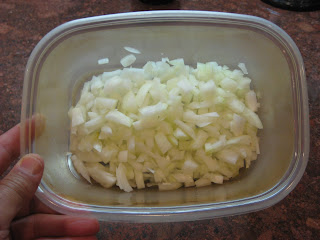ALFTA, Sweden—Lisa Englund probably wasn't thinking straight when she agreed
to give Scandinavia's most notorious culinary classic a try.
At summer's end, more than a thousand locals gather in
Alfa, Sweden, to eat fermented fish known as Surströmming. WSJ's John Stoll
tries out the notoriously smelly fish.
"I've made a promise to my grandmother that I would eat at least one fish,"
the 21-year-old law-school student said while holding a cracker loaded up with
onions, potatoes and pinkish-brown meat. She had just taken the first bite. "I
wish I could say I like it, but I really don't."
Sitting in a hockey rink in Alfta, a small farming town nearly three hours
north of Stockholm, Ms. Englund was home from college for an annual
end-of-summer rite. It is here that 1,300 locals pull out all the
stops—drinking, dancing, singing while standing on chairs, and skinny
dipping.
But most important, the crowd digs into a meal of nearly rotten Baltic
herring known as
surströmming. "It smells," Karin Boström Wiklund, the
Alfta event's main organizer, admitted while uncovering trays of fermented
herring.
The way surströmming is made explains why it smells so bad. Fish caught in
the spring off the Gulf of Bothnia coast are packed into a barrel with salty
brine that prevents them from rotting entirely. The fish ferment in the barrel
for a month or so, aging in a stew of lactic acid bacteria and enzymes.
Surströmming is then sealed in big round cans, with pressure building up so
aggressively inside that they bulge at both ends—and sometimes burst.
Sweden's Smelly Culinary Classic
Ola SvärdhagenOla Sv?rdhagen
Surströmming
Opening a can of surströmming is an art, or a science. Some people first
punch a small hole in the tin with a can opener, to relieve the pressure. Some
advocate submerging the can in water while opening it, just to avoid the strong
odor. Some take the can outdoors and open it at arm's length, letting the smell
dissipate in the open air, then clean the fish.
The European Union, in recent years, has maintained that surströmming is
toxic and has threatened a ban. Swedes, meanwhile, are mounting a campaign to
have surströmming treated with the same reverence that is given to caviar,
Champagne and Parmigiano-Reggiano.
Surströmming has been around for centuries. Unable to afford enough salt to
preserve fish over a harsh Nordic winter, Swedes turned to fermentation to keep
herring edible, or even a delicious acquired taste.
"I try hard to think of apple sauce when I eat it," Anders Frisk, a
39-year-old who came from the neighboring town Edsbyn to sit with friends around
a campfire before the Alfta event. "Really, I'm here for the party."
Despite the stench, Alfta's revelers are among a growing throng of Swedes
expected to swallow at least a morsel of the salty fermented herring during the
late-summer weeks that constitute surströmming season. Conny Roth, a retired
economist who now helps steer the Swedish academy of fermented herring,
estimates that about 700,000 cans of the fish will be consumed in 2012.
Mr. Roth said surströmming consumption has been increasing for several
years—this despite the attempt by the EU to ban it because of concerns that high
levels of dioxin and PCBs found in fermented herring may be hazardous,
particularly to pregnant women and children.
Officials in Sweden managed to win a temporary exemption that lasted between
2002 and 2011.
When that expired, the EU granted a permanent exemption with one catch:
Sweden needed to inform citizens of the supposed dangers of surströmming. So the
government set up a Web page to let people know if the smell or taste didn't
bother them, the chemicals might.
Ms. Wiklund, the Alfta party organizer, shrugs off the EU's concerns.
"One would have to eat thousands of fermented herrings for it to be
dangerous, so I'm not worried."
Having won a permanent reprieve—a move that preserves a multimillion-dollar
industry and saves hundreds of jobs—Swedes are now trying to push it one
further. Mr. Roth, along with the academy of fermented herring, is working to
get a coveted EU "origin protection" for surströmming.
If successful, only surströmming produced in Sweden could be identified as
the genuine article. The academy will submit its application to the EU in the
fall, Mr. Roth said.
Despite being a national hero, surströmming remains largely a social outcast.
Airlines have banned surströmming cans onboard, threatening passengers with a
$50,000 fine if one should open in the cabin or cargo bay.
Mr. Roth says he now actually likes surströmming and can eat several fish in
one sitting. But it wasn't always thus. "Initially, I found both the taste and
smell of it despicable, but I figured I had eat it to impress my then-to-be
wife," Mr. Roth said. "Gradually over the years, I have learned to love it."
The swanky Sturehof, located in Stockholm's ultraposh Östermalm district, is
a popular haunt for bankers, executives, politicians and tourists. When the
terrace is converted for its annual surströmming tasting, the place becomes even
more popular.
"We're always fully booked the day we serve fermented herring," Ola
Stålnacke, the restaurant's head chef, said. Jacob Holmström, head chef at
nearby Gastrologik, describes the fish as "fearsome" and "one of the most
extreme foods in the world." He doesn't hesitate to use it as a key ingredient
in sauces served with raw scallops and crispy radishes.
A version of this article appeared September 4, 2012, on page A1 in the U.S.
edition of The Wall Street Journal, with the headline: Sweden Has Champagne
Aspirations for Its Smelly Fermented Herring.














![[SB10000872396390444301704577629522612997942]](http://s.wsj.net/public/resources/images/OB-UK320_ROTFIS_D_20120903131158.jpg)




 Believe It or Not! Ripley’s Times Square is scooping up freeice cream cones for visitors on Friday, August 17, 2012…but don’t expect the standard vanilla, chocolate or strawberry.
Believe It or Not! Ripley’s Times Square is scooping up freeice cream cones for visitors on Friday, August 17, 2012…but don’t expect the standard vanilla, chocolate or strawberry..jpg)



















